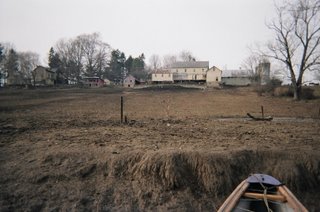
On December 9, 2006, during the last three hours of its last session, the 109th United States Congress passed the "Musconetcong Wild and Scenic Rivers Act," which designates portions of the Musconetcong River as a component of the National Wild and Scenic Rivers System.
The Musconetcong meets the Delaware River just a few hundred yards below the Roebling cable suspension bridge that connects Riegelsville, PA with Riegelsville, NJ.
The Musconetcong is not merely one of many remarkable siblings in the Delaware River Basin family of streams, it is now officially an “outstandingly remarkable” river as defined by National Wild and Scenic Rivers Act, and as documented by the National Park Service and a host of other public and private organizations and individuals.
The Musconetcong resembles mother Delaware in so many ways. Each river richly deserved its wild and scenic designation for possessing so many outstanding historic, scenic, recreational and environmental features.
The Delaware forms the boundary between four states (NY/PA/NJ/DE); the Musconetcong between four New Jersey counties including Hunterdon, Warren, Morris and Sussex. Both rivers suffer to varying degrees from multi-jurisdictional fragmentation and their respective Wild Scenic River Management Plans prescribe a cure that if taken with should help ensure that a big picture approach prevails over the insidious small-town mentality. If I had my way all townships would be abolished! Watershed boundaries would replace the endless chain of meaningless little political fiefdoms that control and more often than not mismanage land use.
Two other streams within the non-tidal Delaware River Basin have been inducted into the nation’s wild and scenic hall of fame for rivers: the Maurice River, which flows into the Delaware Bay near the hamlets of Shell Pile and Bivalve, New Jersey, and the White Clay Creek which flows through the southeastern-most portion of Chester County, Pennsylvania into New Castle County, Delaware, where it meets the Christina River. The Christina runs into the tidal Delaware River near Wilmington.
Understanding the National Wild and Scenic River System is not easy. There are many nuances in the way each wild and scenic river is “managed” and there are huge differences in the various roles given to the National Park Service.
The Delaware River alone has three distinct flavors of National Wild and Scenic River designations that neatly match the three distinct non-tidal sections. The proposed Tocks Island Dam between Port Jervis spawned the Delaware Water Gap National Recreation Area in 1978. Here the federal government owns the land adjacent to the river and the National Park Service manages the land and recreational activities on the water.
The Upper Delaware Scenic and Recreational River was created a few months later, but 95% of the land adjacent to the river is privately owned. The NPS cannot regulate land use in this section of the river, but the National Park Service has primary responsibility for enforcement of river recreation. The Upper Delaware Council was formed with representation from municipalities from New York and Pennsylvania.
The Lower Delaware River between the Water Gap and Washington Crossing was designated just six years ago. The Lower Delaware River, Musconetcong River, Maurice River, and White Clay Creek are considered by the National Park Service to be “Partnership Rivers” meaning that they flow mainly through private land and the NPS is strictly limited to serving in an advisory role. Responsibility for on-the-water activities and land use remains with local, state and county governments and private property owners.
That’s a look at the bureaucratic side of our regional wind and scenic rivers. But what are the benefits of wild and scenic designation?
Foremost is that each river has a management plan that identifies the “outstandingly remarkable” resources that are to be protected and if possible improved, from water quality and recreational access, to historic structures and scenic vistas. River Management Committees bring people and organizations together to focus on the river and its tributaries.
The Partnership Wild and Scenic Rivers receive a modest, albeit shrinking amount of money from the federal government to implement their management plans.
Finally, wild and scenic designation makes a compelling case statement for the protection of specific resources. For example, the Delaware River Basin Commission has enacted more stringent water quality regulations for the Upper and Middle river sections, and is proposing the same for the Lower Delaware River.
The Musconetcong Watershed Association and other organizations have been pressing the NJDEP for a Category One water quality designation without success, but the new designation makes this a no-brainer that the NJDEP will have a difficult time denying.
The next post will explore in depth just what it is that makes the Musconetcong River so “outstandingly remarkable.”







































